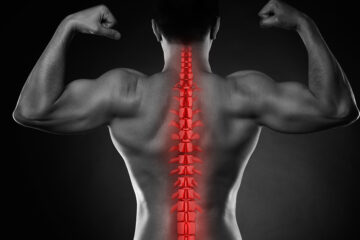What Does Sciatica Pain in the Back Feel Like?


What Does Sciatica Pain in the Back Feel Like?
Sciatica is a common condition characterized by pain that radiates along the path of the sciatic nerve, the longest nerve in the body. This nerve runs from the lower back, through the hips and buttocks, and down each leg. Sciatica pain can vary widely in intensity and quality, and understanding its specific characteristics can help individuals identify and manage the condition more effectively. Here, we explore what sciatica pain feels like and how it can impact daily life.
Characteristics of Sciatica Pain
- Radiating Pain: One of the hallmark features of sciatica is pain that radiates from the lower back down through the buttocks and into one or both legs. This pain typically follows the path of the sciatic nerve, making it feel like a deep, sharp, or burning sensation. Unlike other types of back pain, sciatica pain often extends beyond the lower back.
- Sharp or Electric Shock-Like Sensations: Many people with sciatica describe the pain as sharp, electric shock-like, or burning. These sensations can be sudden and intense, often catching individuals off guard and making simple movements like standing up or walking particularly challenging.
- Numbness and Tingling: Sciatica can cause numbness and tingling in the affected leg or foot, often referred to as "pins and needles." This sensation can vary in intensity and may be accompanied by a feeling of weakness in the leg. The numbness can sometimes extend to the toes, making it difficult to feel certain surfaces or objects.
- Worsening with Movement: Sciatica pain can worsen with certain movements or activities, such as bending, lifting, or prolonged sitting. Activities that involve twisting the spine or placing additional pressure on the lower back can exacerbate the symptoms. Sitting for long periods, especially on hard surfaces, can also increase the pressure on the sciatic nerve, intensifying the pain.
- Varying Intensity: The intensity of sciatica pain can vary from person to person and can fluctuate throughout the day. Some individuals may experience mild discomfort, while others may find the pain debilitating. The pain can also shift in intensity, sometimes becoming more severe after specific activities.
- Unilateral Pain: Sciatica usually affects only one side of the body. The pain often starts in the lower back and radiates down one leg, although it can occasionally affect both sides. The unilateral nature of the pain helps distinguish sciatica from other types of back pain.
Causes of Sciatica Pain
- Herniated Disc: A herniated disc occurs when the soft inner material of a spinal disc pushes through its tougher exterior, pressing on the sciatic nerve.
- Spinal Stenosis: This condition involves the narrowing of the spinal canal, which can compress the sciatic nerve.
- Degenerative Disc Disease: The natural wear and tear of spinal discs can lead to disc degeneration, irritating or compressing the sciatic nerve.
- Piriformis Syndrome: The piriformis muscle, located in the buttocks, can sometimes irritate the sciatic nerve, leading to pain.
- Spondylolisthesis: This condition occurs when one vertebra slips over another, potentially compressing the sciatic nerve.
Managing Sciatica Pain
- Physical Therapy: Exercises designed to strengthen the muscles supporting the spine, improve flexibility, and promote proper posture can help alleviate pressure on the sciatic nerve.
- Medications: Over-the-counter pain relievers, anti-inflammatory drugs, or prescription medications can help manage pain and reduce inflammation.
- Hot and Cold Therapy: Applying heat or cold packs can provide temporary relief from pain and inflammation.
- Lifestyle Changes: Maintaining a healthy weight, practicing good posture, and avoiding prolonged sitting can help prevent flare-ups.
- Surgical Intervention: In severe cases, surgical options may be considered to relieve pressure on the sciatic nerve.
Sciatica pain is a unique and often debilitating condition that can significantly impact daily life. Recognizing the specific characteristics of sciatica pain, such as its radiating nature and sharp, electric shock-like sensations, can help individuals identify the condition and seek appropriate treatment. If you suspect you have sciatica or experience persistent or worsening symptoms, it is important to consult a healthcare professional for a proper diagnosis and personalized treatment plan. With the right approach, many people with sciatica can find relief and improve their quality of life.



